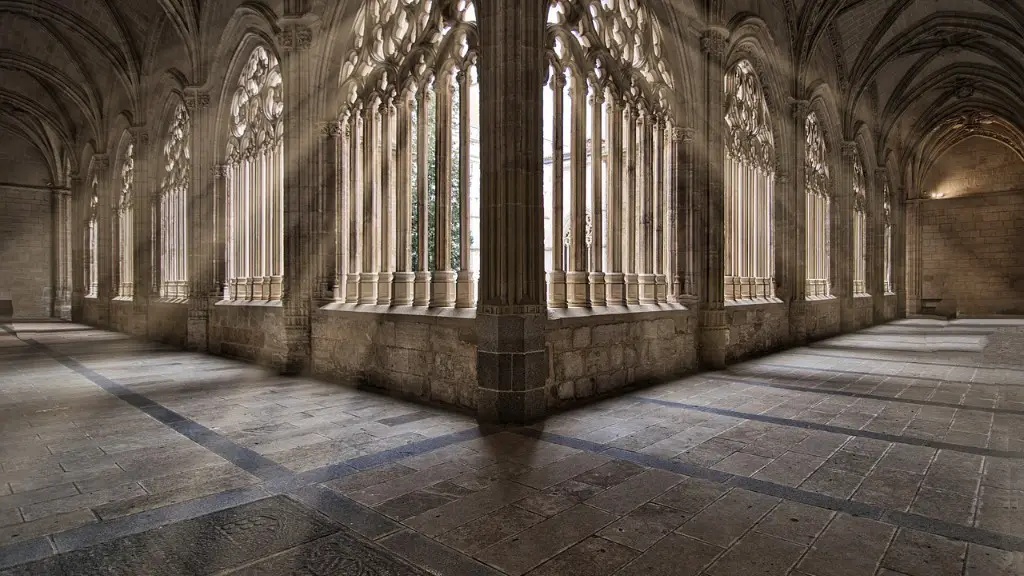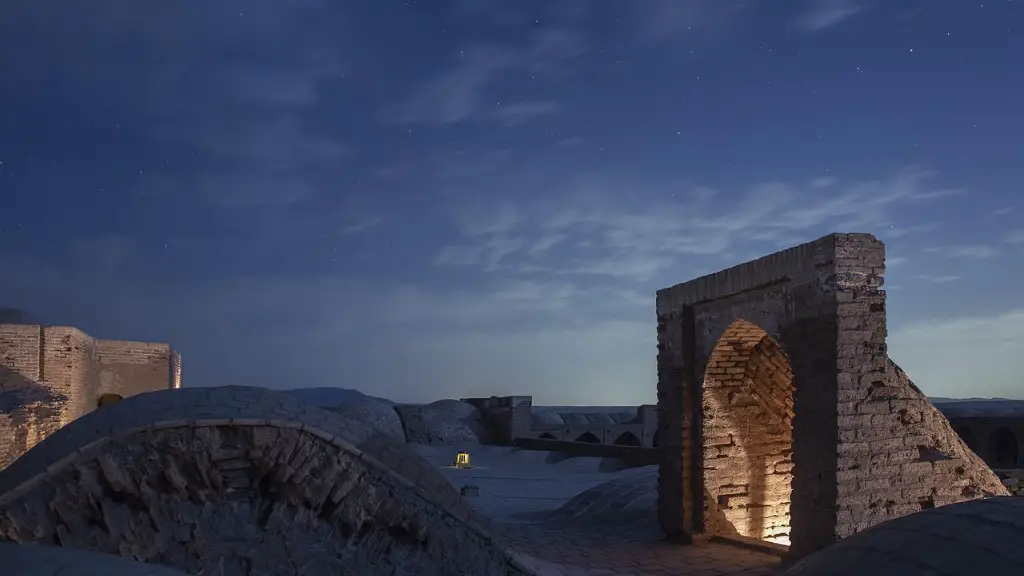Traditional Architecture Around the World
Nearly every country has its own unique and complex architectural style, and many are known for their enduring historical buildings and designs. From the iconic pagodas of China to the cobblestone streets of Italy, people from all over the world come to visit these ancient and modern buildings. The architecture in many countries has evolved over centuries and contains an immense amount of cultural and historic significance.
One of the many countries known for its unique architecture is the United States. While it may not have the longest standing structures, the cities of the United States contain many of the most modern and fascinating designs in the world. New York City is a prime example, with its soaring skyscrapers, impressive bridges, and art deco buildings. While much of the city is modern, there are a few traditional structures, such as brownstones and townhouses, that give the city its unique charm.
China is also known for its unique architecture. The ancient cities of Beijing and Xi’an are full of legendary structures, from the Forbidden City to the Great Wall. The traditional Chinese style of architecture is seen in many of these buildings, from the grand palaces to the intricately carved wooden roof beams. In addition, China’s impressive pagodas are found all over the country, each with its own distinctive style.
Just as China has pagodas, Europe is home to some of the world’s most iconic cathedrals. St. Peter’s Basilica in Rome is one of the most impressive and beautiful churches in the world. The grand domes, marble and stone facades, and the skills of sculptors, painters, and architects have made this one of the most legendary structures in history. Other cathedrals and churches in Europe, such as Notre Dame in France and Westminster Abbey in England, are also breathtaking examples of Gothic architecture.
Architecture in Africa
Many African countries maintain their own unique architectural style consisting of bright colors, bold patterns, and intricate shapes. One of the most famous of these is the mud-houses found in Mali and other west African nations. These traditional homes, made of mud and straw, are constructed to provide insulation and protection from the elements. The exterior walls are often intricately decorated with symbols and patterns.
In Ethiopia and Eritrea, a unique style of architecture known as tukul is very popular. These circular one-room dwellings, constructed of wood and clay, are often decorated with paintings of animals and plants, and some even have straw roofs. This style of architecture is also found in other parts of Africa, such as Kenya, Tanzania, and South Africa.
The Architecture of the Middle East
The Middle East is home to many impressive historical structures, ranging from palaces and mosques in Turkey and Iran to ancient cities in Jordan and Egypt. In Turkey, ornate minarets, domed mosques, and grand Ottoman-style palaces adorned with intricate patterns and motifs are found across the country. Buildings such as the Topkapi Palace and the Blue Mosque are two of the most impressive examples of Turkish architecture.
Iran is also home to many stunning structures, from beautiful mosques in major cities to ancient ruins from the Achaemenid Empire. The city of Isfahan is particularly renowned for its countless architectural wonders, from the grand mosques and cathedrals to the bridges and palaces of the Euphrates river.
The Architecture of India and Southeast Asia
India is well-known for its intricate and colorful buildings, such as the famous Taj Mahal. The grand marble mausoleum, built by emperor Shah Jahan in 1648, is an example of Mughal architecture, which combines Persian and Islamic elements. Other examples of Mughal architecture can be found in the palaces of Agra and Delhi.
In Southeast Asia, there are very different styles of architecture. Cambodia is home to ancient and elaborate temples, such as Angkor Wat, while Thailand is known for its ornate and colorful temples. Myanmar, too, is known for its impressive structures, including the stupas and pagodas of Bagan.
Colonial Architecture Around the World
The influence of colonial architecture can be seen in many parts of the world, from the cobblestone streets of Cartagena in Colombia to the French-style mansions found in the Caribbean islands. In India, many of the most iconic structures, such as the Mumbai Gateway of India and Old Bombay, were built by the British during the colonial period.
In the United States, the influence of European architecture can be seen in the colonial-style homes, churches, and courthouses that dot the landscape. Many cities in the southern states, such as Savannah and Charleston, are characterized by their graceful and ornate architecture.
Modern Architecture
Though much of the world’s architecture is rooted in the past, many countries are now experimenting with modern and avant-garde designs. In the West, many cities have embraced the skyscraper and have created towering glass and steel structures, such as the London Shard and the Willis Tower in Chicago.
Many Middle Eastern countries, too, have embraced modern design, from the sleek skyscrapers of Dubai to the futuristic structures of Kuwait City. Singapore, too, has been dubbed a “city of the future”, with its impressive array of modern structures, such as the ArtScience Museum and the Marina Bay Sands.
Japanese Architecture
Japan has a long and distinguished history of architecture, from the traditional wooden structures of the Edo period to the more modern and eclectic designs of the post-war era. Traditional buildings in Japan often feature sliding paper doors, tatami mats, and wooden beams, while modern buildings are characterized by sleek lines, bold colors, and intricate woodwork.
One of the most iconic and beloved structures in Japan is the iconic Gion Shrine in Kyoto. The shrine, built in the 8th century and still standing today, is an impressive wooden structure with elaborate carvings and sweeping roofs. Other examples of traditional Japanese architecture include the shrines of Nikko and the dramatic torii gates of Fushimi Inari.
Sustainable Architecture
Sustainable architecture, which prioritises minimizing energy use and reducing waste, has become increasingly popular around the world. In the United States, buildings such as the Bullitt Center in Seattle are considered to be some of the greenest and most efficient in the world.
In Europe, countries such as Germany and Finland have been pioneers in creating buildings that use renewable energy and innovative design techniques. The solar powered “zero-energy” house in Finland is one example of such innovative architecture.
In Asia, too, traditional styles of architecture are being combined with modern techniques to create structures that are both beautiful and efficient. For example, in India, modern solar-powered homes are being built in rural areas while still incorporating traditional designs.
The Influence of Digital Technology on Architecture
In recent years, digital technology has had a huge impact on the field of architecture. Architects are now using Computational Design, a technique that uses computer software to generate complex shapes and forms, to create unique and innovative structures. This technology can be used to create buildings in a fraction of the time it would take with traditional methods.
In addition, augmented and virtual reality are allowing architects to get a better understanding of their projects by allowing them to explore the spaces virtually. This is allowing architects to get a better understanding of how their designs will look in real life, helping to create better and more efficient structures.
The Importance of Preservation
The world’s architectural heritage is of immense value, and it is important to preserve these structures for future generations. From the ancient ruins of Rome to the magnificent cathedrals of Europe and the grand palaces of China, it is our responsibility to make sure that these structures are protected and preserved.
Many countries are taking steps to ensure that their architectural heritage is protected and preserved. In the United States, the National Park Service works to protect the nation’s historic sites, while in Europe, many countries have created laws that protect historic buildings from being demolished or altered.
The Influence of Architecture on Daily Life
Architecture has a huge influence on how we live our daily lives, from how we interact with our environment to how we travel from place to place. Buildings and structures help to give a sense of identity to a place, and they can also help us to understand our past or envision our future.
In addition, architecture can also have a major impact on public morale, with bright colors and interesting shapes being associated with positive emotions. Buildings can also influence a sense of community, with places of worship, cafes, and public parks providing places for people to gather and socialize.
The Future of Architecture
The future of architecture is an ever-changing, ever-evolving field. In the coming years, we will likely see an increase in sustainable and efficient design, as well as more experimentation with Computational Design, augmented and virtual reality, and innovative materials. We may also see a rise in more public-centric designs, with structures designed to cater to the needs of communities rather than corporations.
Whichever direction architecture takes in the future, it is sure to remain varied, fascinating, and diverse. From the history-rich structures of the past to the modern and avant-garde designs of the future, architecture provides endless possibilities for creativity, exploration, and discovery.



